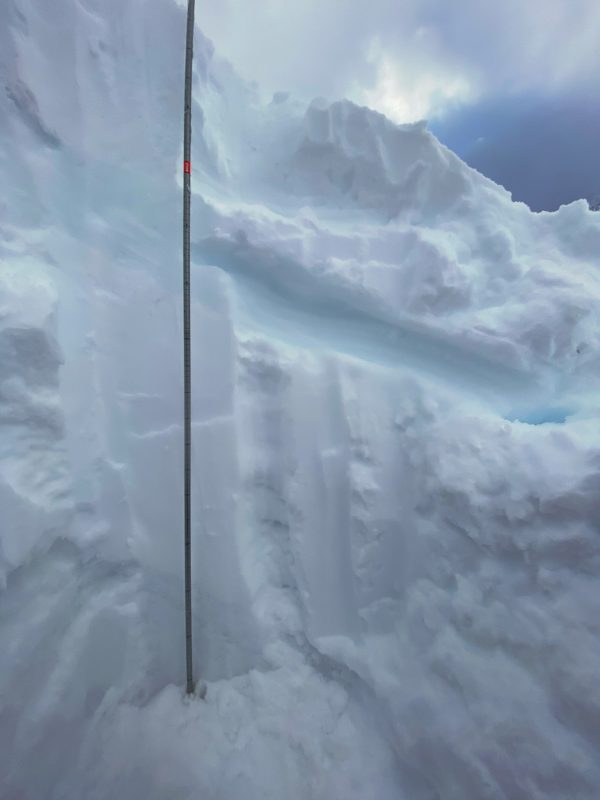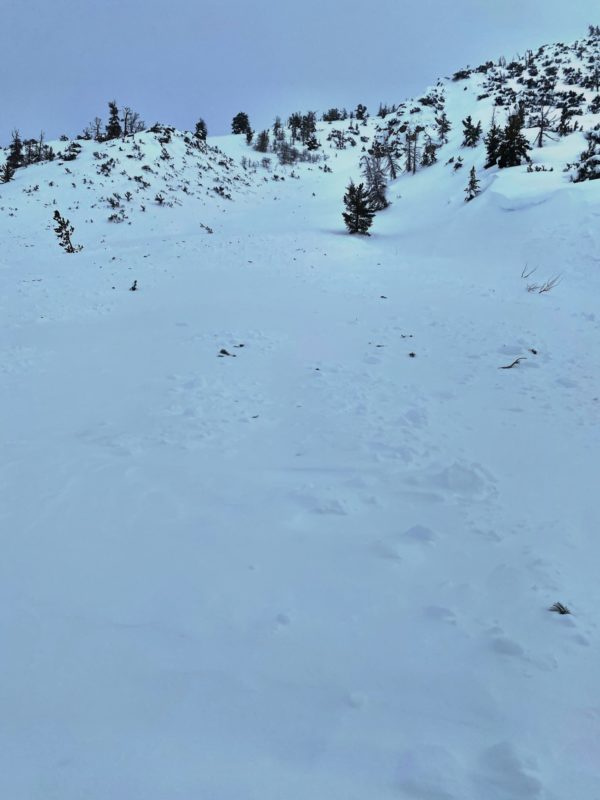Observation Details
Observation Date:
January 11, 2023Submitted:
January 11, 2023Zone or Region:
Bishop CreekActivity:
Skiing/SnowboardingLocation:
Jawbone / AspendellObservations
We took advantage of the better weather and open roads today to get out and see how the storm snow had stacked up, making a short hike out of Aspendell to the lower flank of Jawbone canyon. Signs of high winds were everywhere we could see, with scouring, deposition, sastrugi, cornices, and broken tree debris scattered all around. The surface snow was mostly dense, wet and wind affected, and ski pen was anything from 0 (supportable wind crust) to 40cm in the softer spots. There was evidence of at least one large (D2-D3) avalanche that had run quite a distance out of the West funnel of the canyon, possibly on 1/9, judging by how re-buried the debris was.
We dug a pit on a safe slope that was representative of and adjacent to the 1/10 avalanche that caused the property damage in Aspendell. The total HS at 8400' was 180cm, and our observation was on a NNW aspect with a 30 degree slope. The bottom 65cm of snowpack could only be described as classic cement, with consolidated wet snow, 1F hard and difficult to even shovel with its weight. From 65cm to 130cm, there was well bonded old snow, also saturated and consistently 4F hard. From 130-140cm there was clearly newer, F hard wet snow, with a very dense (1F) layer of wind/rain crust from 140-150cm, topped off with softer and drier new snow from 150-180cm.
The crust layer did not seem to be reactive, and CT tests did not produce any results or demonstrate any instability, indicating that in spite of the dramatic density change, those 3 upper layers seemed to also be well bonded.
Signs of Unstable Snow
Media


